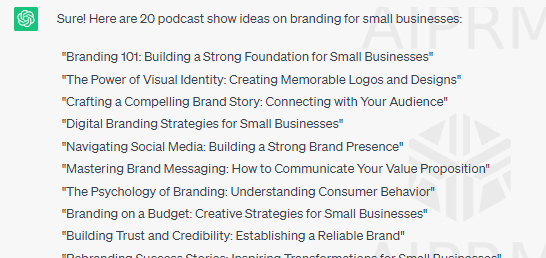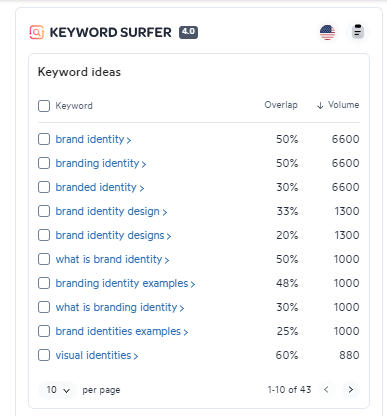Podcasting started in 2004 and steadily grew into a loved source for entertainment and education. Asides from just listening designers can play an active role in the podcast industry by creating shows themselves via simple records and uploads.
Here are 7 reasons why you should podcast
- Display expertise and stand out form the crowd
- Grow skills other than your profession e.g communication
- Engage with million s of audiences
- Meet with admired professionals
- Promote your products and service
- Expand the value and reach of your network .
How do I start podcasting?
This depends on how easy or comprehensive you want things to be i.e. you can do it yourself or hire a sound engineer, script writer and an advertising agency to do it for you.
But Let’s guess you aren’t over the top and want to start things simple. The below podcasting steps are for you.
- Conceptualize
- SEO for podcasting
- Tools for recording a podcast
- Uploading and distributing your podcasting
- Promoting your podcast.
1. Conceptualize
Image Credit: pexels-george-milton
Every podcast show has a theme or message it seeks to pass across which defines its content and lesser details like sound and graphics.
Ask Yourself?
Why are you starting this- Reason
What do I hope to achieve- mission
Who am I talking to- Audience
For graphic designers clients can be the center of your podcast show. You mean to educate them on the best ways to manage designers for desirable results or creative branding tips for marketing. Whatever the reason its important you have your reason and theme scribbled somewhere before proceeding.
Note: Ensure your concept is a passionate one, this helps you produce content beyond the first episode.
With your concepts answered head on to making a list of episodes topics targeting your audiences. You can start with a pen and paper or you can use the ChatGPT tool to discover unlimited content ideas.
Enter the prompt ” Give me 20 ideas for a podcast show on branding for small businesses”
You can start with the topics on this list but let’s make them more effective using SEO.
2. SEO for Podcasting
Image Credit: pexels-george-milton
Search Engine Optimization SEO, is a marketing technique that ensures your content is relevant or sought after by audiences.
What does this mean? Before creating content its crucial to know if your content is one audiences are searching for , after all there no point in creating content no one wants to listen to. But how do you know what audiences are searching for? This is where SEO comes in.
To perform SEO i.e discvoer what topics your audiences are interested in and use it to gain visibility for your podcast you need an SEO tool . But don’t fret, its easy to use and the ones below are free to use.
Free SEO tools for podcast
Answerthepublic
Image Credit : Answerthepublic
Answerthepublic is a volume search tool by Neil pater an SEO and marketing Juggernaut Neil Patel .
Using ask the public anyone can get insight to the volume of traffic atopic gets on search engines. For a podcasters this determines if your content is of high or low interest.
Simply enter the main term of your topic , in this instance let’s use “Visual Identity” from the second topic provided by chatGPT.
Ask the public then presents visual presentation of terms associated with ‘ visual identity” and search volumes. You can pick one or more topics from this alone.
Pricing: Free with 3 searches only
Keyword surfer
Image Credit : Keyword Surfer
An extension available for chrome users. With SEO surfer users find traffic estimates right inside their browsers without visiting additional sites. Simply enter a search term e.g. :visual identity and Keyword surfer presents a list of topics associated with it and their search volumes.
Note: High search volumes are great for traffic volumes but so are low volume keywords. For instance a low search volume keyword suggest a niche audience. You can create content to cater to these niche audiences and build a following
Step 3.Tools for recording a podcast
Image Credit: pexels-george-milton
With your topics for a podcast completed its time to record your amazing ideas.
Now million dollar firms hire sound engineers for podcast recording but you can record your podcast by yourself and achieve amazing results.
Tools for podcast recording
- USB mic. For amplifying your voice and delivering higher quality audio to listeners. Any budget mic will do!
- A Laptop. For recording and editing your podcast shows.
Your topics can be discussed solo i.e you alone or with a cohost or multiple participants.
If your podcast involves a participant not in the same physical space then tools like skype are great for recording. Skype however, records the audio between you and others as a single audio file instead of multiple ones for easier editing.
Mac users can solve this with Ecamm Call Recorder or Pamela for Skype . Windows users can use Zencastr.
Tools for podcast editing
Audacity. Adobe’s audio ediitng tool available for cloud memebers or a standalone price of $31.49 to $33.99.
Garageband. An Audio editing tool for Apple suers only.
Audacity. A free and popular audio editing tool for window users.
For adding music
Pond5: popular marketplace for a wide range of royalty-free music tracks, sound effects, stock footage, and other media assets.
Audio Network. Music licensing platform with a vast majority of genres and styles to choose form
Free Music Archive. Offers free musisc for use in creative projects.
For Album art
Your podcast needs an enticing cover to attract clicks. For designers this is your turf and you can use Photoshop or Canva or try out illustrations form these free sites for illustrations.
Note: Podcast cover arts are always square sized so ensure your images are exported in this size e.g 300*300
Step 4. Uploading and distributing your podcast.
Image Credit : pexels-cottonbro-studio
Got your awesome content in the pan? Now it’s time to serve. For serving two steps are required : Hosting and uploading.
Hosting
Podcasts are first hosted i.e stored in online servers before sharing to various platforms. Here are popular platforms you can try
- Libsyn: Libsyn (short for Liberated Syndication) offers reliable hosting for podcasters with various paid plans and storage options.
- Blubrry: A popular hosting platform offering customizable podcast websites and integrations with services like wordpress.
- Podbean: A free platform for hosting unlimited podcast. Great for podcasters just starting out.
Sharing to directories
Directories are listings where users search for podcast shows. The most popular directories are
- Apple podcast: By far the largest directory on the planet where users discover and subscribe to podcasts across various genres. available on mac and iOS devices and as a standalone app.
- Google podcast: Dedicated podcast app for Android devices. Formerly google play the Podcasts platforms offers a user-friendly interface, personalized recommendations, and integration with other Google services.
- Spotify: An streaming content with a focus on audio. Get access to millions of subscribers who search for podcast shows on the platform.
The list isn’t exhaustive be sure to check out 25 other directories you can upload podcast content to increase visibility.
Step 5. Promoting your podcast
Image Credit: pexels-george-milton
With Uploading complete. It’s now time to tell the world about your content.
First create a snippet form your audio and attach an image to it using headliner then share across social media platforms and to family and friends too.
You can go a step further and send use Facebook advertising to increase your reach.
Expose your services to a new world
Image Credit: pexels-nappy-
Oladimeji Ajegbile started off as a graphic designer before venturing into content production for social media. His earnings as a graphic designer have since then skyrocketed via his increased publicity. But he also enjoys the new business of engaging users on social media and building a following.
Point is : In 2023 there are several ways to monetize your design skills asides just designing. Take advantage of this to to only reach a new markets but explore parts of you , you didn’t know existed.
Start your podcasting journey today and tell us in years to come that it all started form this post.
Interested in more reads that help you monetize your skills then check out our social media content for graphic designers or cold emailing tips . Enjoy!











